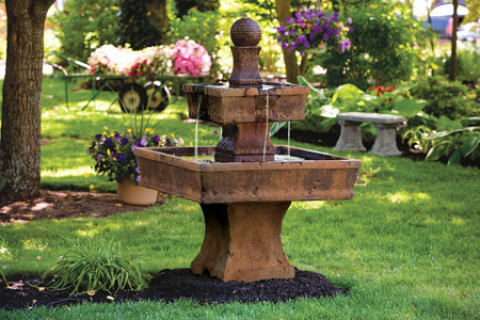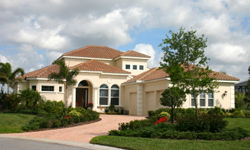|
"In the days of an uncertain stock market and job insecurity, there's no place like home sweet home. Even though the housing bubble burst over the course of 2007 and 2008, according to MSN Money, homeowners in many areas of the United States can still recoup 80 to 90 percent of the money spent on home improvements. The key is to know where to spend. Just because you put $20,000 into renovations, it won't necessarily add that much value. If your house needs a new roof, you won't see a return on it for a while because people expect the roof in a house they're buying to be in good shape. The same can be said for your plumbing and electrical systems. Bad plumbing will detract from the value, but new plumbing won't necessarily drive up the price tag. The key to adding value is to focus on the things that are important to buyers, and to not over-improve. You don't want to have the most expensive house on the block. So if the houses in your neighborhood have concrete driveways, investing in expensive brick pavers may not be in your best interest financially. Tips for how to get the best bang for your buck on your home renovations, even in a tight real estate market. If your house doesn't look appealing from the outside, chances are a potential buyer will never make it inside. According to Bankrate.com, a good first impression can add five to 10 percent to the value of your home. If the exterior color of your house is dated or fading, painting is a good place to start your improvements. Choose colors and exterior details that match the period of your house. Shutters add charm and depth, but not if they're hanging crooked or flaking paint. Paving a driveway or walkway that is in disrepair is a must, because this is what leads people to your home -- you want it to be welcoming. Attractive, manicured front-yard landscaping will also add value to your home. Drought-tolerant plants and easy-to-care-for perennials are a good option if you don't have a green thumb. And don't forget about your backyard either. Outdoor living is very popular as more people wish to commune with nature in the comfort of their own home. Sprucing up a deck or patio with attractive furniture, raised garden beds and maybe even a water feature will give you years of enjoyment and appeal to future buyers. Many homeowners don't give much thought to their landscaping, but a good design can add significantly to your home's value -- sometimes as much as a new kitchen or bath. Have a landscape architect out to your house to assess what you've got and offer suggestions. Perhaps creating a more formal look will better match your home's style (think geometrical shapes and straight lines), or, if your lot backs up to lots of trees, a woodland look full of natural paths, native plants and lots of groundcover. There's often no fee for an architect's design if you buy at least a few items, which is well worth it. Keep in mind, too, that landscaping is more than greenery -- it includes lighting, fences, rock features, paths, ponds, fountains and more. So even if your current trees and plants are attractively laid out, they may still be greatly enhanced by, say, a curving pathway, bench and a few well-placed lights. Landscaping is especially important (and more valuable to your bottom line) in temperate climates, where your plantings are visible year-round and you're able to be outside enjoying features like ponds all 12 months of the year". Reference:
Sennebogen, Emilie, and Melanie Radzicki McManus. "Top 10 Ways to Add Value to Your Home." HowStuffWorks. Howstuffworks.com, n.d. Web. 03 Apr. 2014. <http://home.howstuffworks.com/home-improvement/remodeling/5-ways-to-add-value-to-home.htm#page=0>.
0 Comments
Your comment will be posted after it is approved.
Leave a Reply. |
AuthorArchives
January 2016
Categories
All
|



 RSS Feed
RSS Feed

